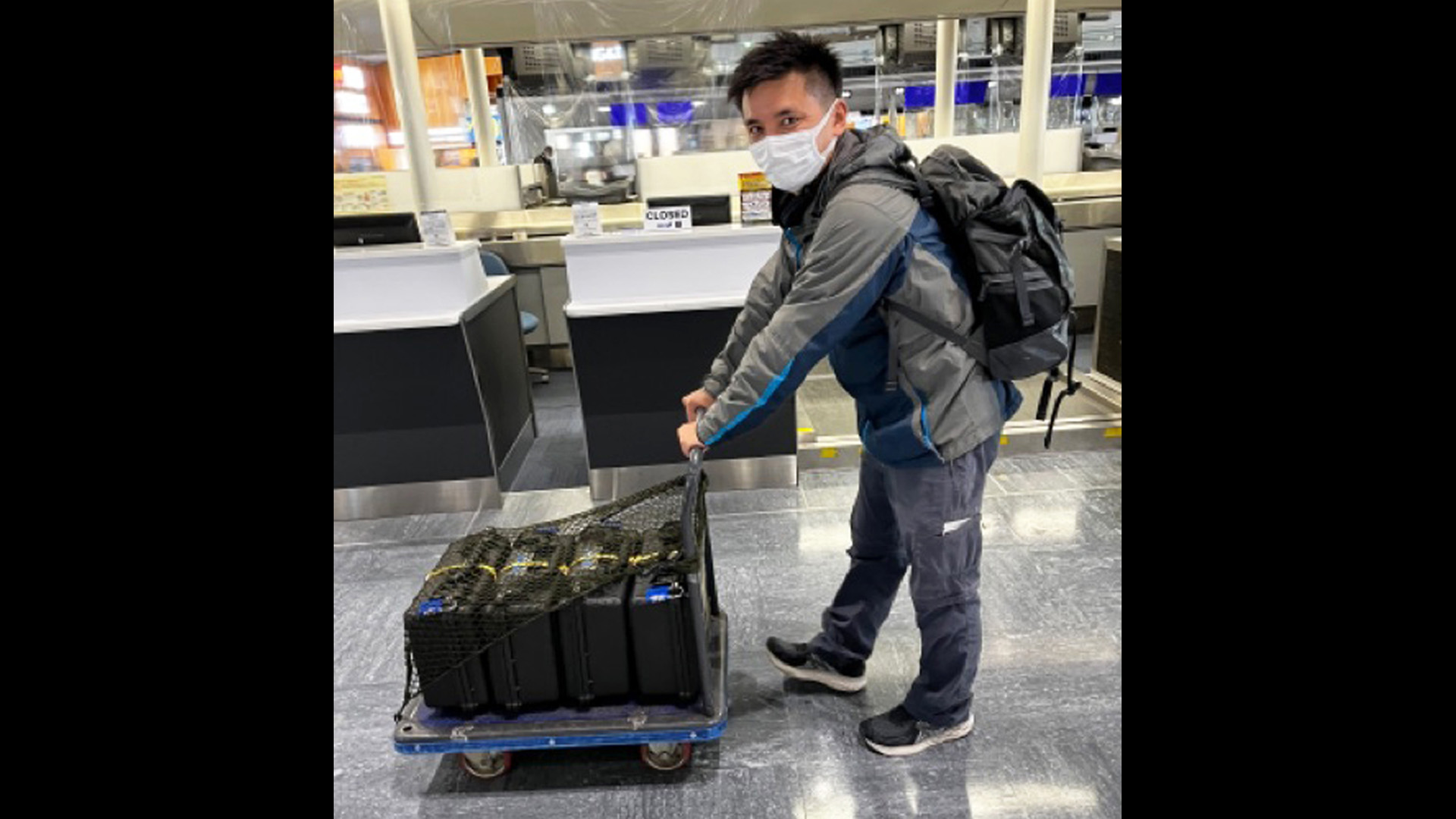Asteroid Ryugu samples, now on Earth, reveal inner workings of the space rock

Pieces of rock from the asteroid Ryugu splashed down on Earth in 2020. Now, scientists studying the samples are revealing the asteroid's true nature.
Ryugu is a near-Earth asteroid that Japan visited with its Hayabusa2 spacecraft. The craft launched in 2014, arrived at the space rock in 2018 and in December 2020 dropped off a capsule carrying 0.2 ounces (5.4 grams) of asteroid material to Earth. This has given scientists the ability to study the asteroid up close here on our home planet with a full range of technologies.
In a new study, scientists reveal a detailed picture of the asteroid and what its surface and subsurface material is really like. And, as it turns out, Ryugu is covered in "flat and elongated" pieces.
Related: Bits of asteroid Ryugu are among 'most primordial' materials ever examined
The team used an optical microscope to take images of grains of material from Ryugu. To get an idea of how these samples represent the complete asteroid, the team also compared what they saw in the lab with observations made by the Hayabusa2 spacecraft, which studied the asteroid from orbit for 16 months and captured some incredible close-up imagery of Ryugu during two landing maneuvers.
"We focused on comparison between pebbles observed by the spacecraft and the returned samples to evaluate the representativeness of returned grains gathered from limited areas of the asteroid," lead author Shogo Tachibana, a cosmochemist and researcher with the Japan Aerospace Exploration Agency (JAXA) and the University of Tokyo, told Space.com in an email.
"The returned samples well represent Ryugu surface particles from a morphological point of view," Tachibana said, adding that the pieces they studied were flat and elongated.
Breaking space news, the latest updates on rocket launches, skywatching events and more!
"This morphology, probably broken pieces of larger boulders, seems characteristic of Ryugu surface pebbles, and we have them in hand now," Tachibana said.
Asteroid nerves
The process of getting pieces from an asteroid from outer space to Earth and safely into the hands of scientists is tricky, to put it lightly.
Tachibana, who worked with the sample collection and capsule recovery teams on the Hayabusa2 mission, said that, unsurprisingly, "there have been many nerve-wracking things ...the safety recovery of the capsule and the rapid and safe preparation for the container opening in the curation chamber were actually most nerve-wracking for me. We had to open the container and take out particles as soon as possible."
Hayabusa2 isn't done yet, however. After delivering the capsule to Earth on Dec. 5, the probe embarked on its first extended mission to another asteroid. The spacecraft will journey to the 2,300-foot-wide (700 meters) asteroid (98943) 2001 CC21 and is expected to fly by the space rock in 2026 if everything works out as planned. The probe will then travel to the asteroid 1998 KY26 and make a flyby in 2031. The craft won't take samples of either asteroid.
This work is described in a new study published today (Feb. 10) in the journal Science.
Email Chelsea Gohd at cgohd@space.com or follow her on Twitter @chelsea_gohd. Follow us on Twitter @Spacedotcom and on Facebook.

Chelsea “Foxanne” Gohd joined Space.com in 2018 and is now a Senior Writer, writing about everything from climate change to planetary science and human spaceflight in both articles and on-camera in videos. With a degree in Public Health and biological sciences, Chelsea has written and worked for institutions including the American Museum of Natural History, Scientific American, Discover Magazine Blog, Astronomy Magazine and Live Science. When not writing, editing or filming something space-y, Chelsea "Foxanne" Gohd is writing music and performing as Foxanne, even launching a song to space in 2021 with Inspiration4. You can follow her on Twitter @chelsea_gohd and @foxannemusic.

